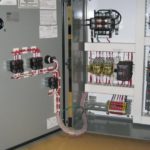
Painting process in automotive industry pptCar interior application will mainly deal with comfort concerns – dirt-repellent and antimicrobial textiles and surfaces, nanoparticulate air filters, anti-glare coatings of mirrors and instruments. Or how about climate-controlled auto seats based on thermoelectrics – components that convert electrical energy directly into heating or cooling.
In 1896, the Duryea Motor Wagon became the first production motor car in the United States. In that same year, Henry Ford demonstrated his first experimental vehicle, the Quadricycle. By 1908, when the Ford Motor Business introduced the Model T, the United States had dozens of automobile manufacturers. The Model T rapidly became the regular by which other automobiles were measured ten years later, half of all vehicles on the road had been Model Ts. It had a easy four-cylinder, twenty-horsepower engine and a planetary transmission providing two gears forward and a single backward. It was sturdy, had high road clearance to negotiate the rutted roads of the day, and was easy to operate and keep.
The main adjust that has taken spot in the coatings market in the course of the last 40 years has been the adoption of new coating technologies. These new coating technologies contain waterborne (thermosetting emulsion, colloidal dispersion, water-soluble) coatings, higher-solids coatings, two-element systems, powder coatings, and radiation-curable coatings.
Pros And Cons Of Teflon Coating On Vehicles painting process in automotive industry ppt
painting process in automotive industry pptFor exhaust cleaning in petrol-powered automobiles, systems based on three-way catalysts are utilised. These can convert the three main pollutants or pollutant types – carbon monoxide, nitric oxides and hydrocarbons – as far as feasible and hence take away them from the exhaust gas. Throughout the conversion of toxic to non-toxic gases nanotechnologies play a critical part. The influence of catalysts generally depends on the size of the surface.
The automobile, for decades the quintessential American industrial product, did not have its origins in the United States. In 1860, Etienne Lenoir, a Belgian mechanic, introduced an internal combustion engine that proved beneficial as a source of stationary energy. In 1878, Nicholas Otto, a German manufacturer, created his four-stroke “explosion” engine. By 1885, one of his engineers, Gottlieb Daimler, was building the 1st of four experimental vehicles powered by a modified Otto internal combustion engine. Also in 1885, another German manufacturer, Carl Benz, introduced a 3-wheeled, self-propelled automobile. In 1887, the Benz became the first automobile offered for sale to the public. By 1895, automotive technology was dominated by the French, led by Emile Lavassor. Lavassor developed the simple mechanical arrangement of the car, placing the engine in the front of the chassis, with the crankshaft perpendicular to the axles.
In 1908 Henry Ford began production of the Model T automobile. Based on his original Model A design and style very first manufactured in 1903, the Model T took five years to create. Its creation inaugurated what we know right now as the mass production assembly line. This revolutionary notion was based on the concept of just assembling interchangeable component components. Prior to this time, coaches and buggies had been hand-constructed in tiny numbers by specialized craftspeople who hardly ever duplicated any certain unit. Ford’s innovative style decreased the number of components required as nicely as the quantity of skilled fitters who had always formed the bulk of the assembly operation, giving Ford a tremendous advantage over his competition.
ED Coating Plants, ED Coating Plant, CED Plants, Manufacturer, Aurangabad, India
Painting Process In Automotive Industry PptIn the early days of the automobile sector, paint was applied manually and dried for weeks at space temperature due to the fact it was a single component paint that dried by solvent evaporation. As mass production of automobiles made the process untenable, paint started to be dried in ovens. Presently, two-element (catalyzed) paint is generally applied by robotic arms and cures in just a handful of hours either at room temperature or in heated booths.
1999329&ensp·&enspon Phosphate Fertilizer & Sulfuric Acid Technology Sheraton Sand Important Resort, Clearwater Beach, Florida May 22 23, 1998 Simulation of Phosphoric Acid Production by the Dihydrate Approach Paul M. Mathias and Mike Mendez Aspen Technologies, Inc. Ten Canal Park Cambridge, MA 021412201 modeling to far better meet the wants of the phosphate industry.
7 Prior to painting, the physique need to pass through a rigorous inspection method, the body in white operation. The shell of the automobile passes by means of a brightly lit white room where it is completely wiped down by visual inspectors utilizing cloths soaked in hi-light oil. Beneath the lights, this oil permits inspectors to see any defects in the sheet metal physique panels. Dings, dents, and any other defects are repaired appropriate on the line by skilled body repairmen. Soon after the shell has been fully inspected and repaired, the assembly conveyor carries it by way of a cleaning station where it is immersed and cleaned of all residual oil, dirt, and contaminants.
Flow Chart Manufacturing Procedure In Automobile Business Ppt
Painting Process In Automotive Industry PptWashing: The initial step of method, to make the auto free of charge from dirt and dust the painted locations and the plastic parts like mudguards, speedometer and so on are washed with a mild shampoo, the surfaces are then wiped and dried. This is carried out so that the paint remains totally free of dust particles after the coating is applied. A soft cloth is used to make sure no undesirable scratches are also caused so as to make sure maximum quality.
Teflon coating can recover from faded paints but it has its limits. It can not entirely take away scratches, the swirl marks on the surface is reduced significantly soon after the whole process. If you want to recover faded paint in a simple way, just use auto waxes produced by 3M, Formula 1, Preston, or any other significant brand. Scratches can also be taken care of by making use of Scratch Out, from Formula 1 which is a liquid rubbing compound.
9 Soon after the E-coat bath, the shell is once again dried in a booth as it proceeds on to the final paint operation. In most automobile assembly plants nowadays, vehicle bodies are spray-painted by robots that have been programmed to apply the precise amounts of paint to just the right places for just the appropriate length of time. Considerable research and programming has gone into the dynamics of robotic painting in order to make certain the fine “wet” finishes we have come to count on. Our robotic painters have come a long way since Ford’s first Model Ts, which were painted by hand with a brush.








